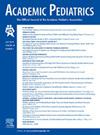Health-Related and Social Drivers of Chronic Absenteeism in an Urban School District
IF 2.8
3区 医学
Q1 PEDIATRICS
引用次数: 0
Abstract
Objective
School attendance is an indicator of child well-being and function across health, education, and social domains. In the 2022–23 school year, 28% of US children were chronically absent from school, contributing to national declines in academic performance. The objective of this study was to characterize health-related and social reasons for chronic absenteeism in an urban public school district.
Methods
We conducted a cross-sectional mixed-methods study in collaboration with a northeastern US urban school district, utilizing a community-based participatory research (CBPR) approach. We analyzed secondary data from surveys administered by school district representatives to caregivers of chronically absent students. Visits were conducted between December 2022 and June 2023. We analyzed quantitative data using descriptive statistics and applied qualitative summative content analysis to transcribed responses to open-ended questions.
Results
The sample included 5223 first-time survey records, each representing one student. A majority of home visit records (71%) selected “Health” and 18% selected “Social” as the primary reason for school absences. Nearly 10% of families reported having both health and social barriers to attendance. Qualitative analysis further described health-related barriers to attendance as acute illness, chronic disease, and mental/behavioral health needs. Social barriers included family-related challenges, transportation difficulties, and housing or financial instability.
Conclusion
Health-related and social barriers were commonly reported reasons for chronic absenteeism in an urban school district. Our findings present a call to action for pediatricians and pediatric health systems to recognize the interrelatedness of school attendance and health, positioning them as key players in addressing chronic absenteeism.
城市学区慢性缺勤的健康相关和社会驱动因素
目的:学校出勤率是儿童健康、教育和社会领域功能的一个指标。在2022-23学年,28%的美国儿童长期缺课,导致全国学生的学习成绩下降。本研究的目的是描述城市公立学区长期缺勤的健康相关和社会原因。方法:我们与美国东北部的一个城市学区合作,采用基于社区的参与式研究(CBPR)方法,进行了一项横断面混合方法研究。我们分析了由学区代表对长期缺课学生的照顾者进行的调查的次要数据。访问在2022年12月至2023年6月期间进行。我们使用描述性统计分析定量数据,并应用定性总结性内容分析对开放式问题的转录回答。结果:样本包括5223条首次调查记录,每条记录代表一名学生。大多数家访记录(71%)选择“健康”作为缺课的主要原因,18%选择“社会”作为缺课的主要原因。近10%的家庭报告有健康和社会障碍。定性分析进一步将与健康相关的障碍描述为急性病、慢性病和精神/行为健康需求。社会障碍包括与家庭有关的挑战、交通困难、住房或金融不稳定。结论:健康障碍和社会障碍是城市学区长期缺勤的常见原因。我们的研究结果呼吁儿科医生和儿科卫生系统采取行动,认识到上学和健康的相互关系,将他们定位为解决慢性缺勤问题的关键角色。
本文章由计算机程序翻译,如有差异,请以英文原文为准。
求助全文
约1分钟内获得全文
求助全文
来源期刊

Academic Pediatrics
PEDIATRICS-
CiteScore
4.60
自引率
12.90%
发文量
300
审稿时长
60 days
期刊介绍:
Academic Pediatrics, the official journal of the Academic Pediatric Association, is a peer-reviewed publication whose purpose is to strengthen the research and educational base of academic general pediatrics. The journal provides leadership in pediatric education, research, patient care and advocacy. Content areas include pediatric education, emergency medicine, injury, abuse, behavioral pediatrics, holistic medicine, child health services and health policy,and the environment. The journal provides an active forum for the presentation of pediatric educational research in diverse settings, involving medical students, residents, fellows, and practicing professionals. The journal also emphasizes important research relating to the quality of child health care, health care policy, and the organization of child health services. It also includes systematic reviews of primary care interventions and important methodologic papers to aid research in child health and education.
 求助内容:
求助内容: 应助结果提醒方式:
应助结果提醒方式:


